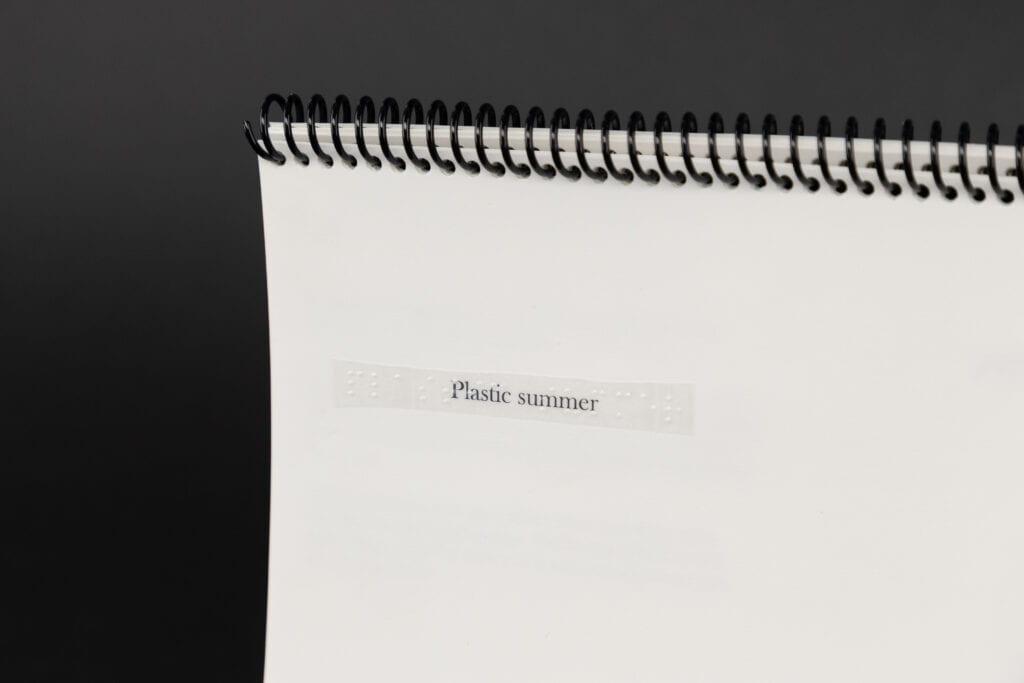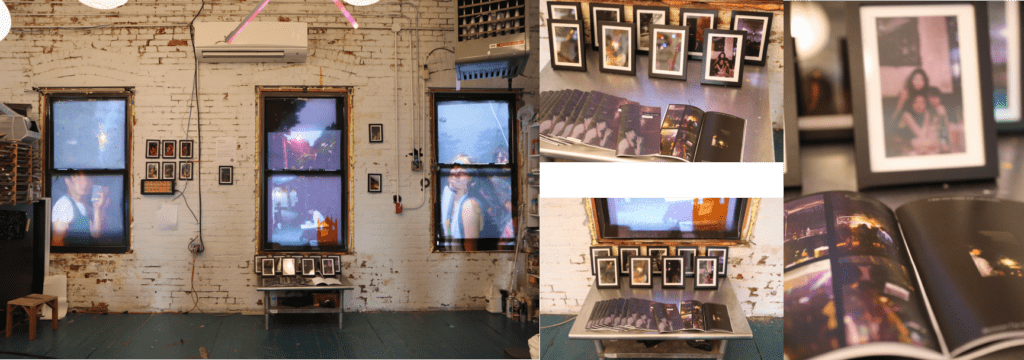Navigating Tongues – Angie Kim
Project Description
Uncovering the layers gained and lost in translation, Angie creates a series of memories that embrace their travels through different mediums.
What starts as a letter about a cherished memory, transforms into a description of an image, then a prompt for AI, to a generated image not so far from the original.
Despite all these layers of translation, Angie explores the similar processes of AI image generation and digging deep into your history for a memory.
Both rely on a collection of knowledge, the main difference is where the input of knowledge comes from.
Disrupting the secondary premonition of alternative text, Angie grounds her images in their descriptions as a written title just as valuable to the work as the image itself.
Accessibility
Tactile Graphics, Prompts, Alt text, Braille label, Swell form printing, Website with QR codes.
Process Documentations
Translating memory into senses.
This project is an archive of ai generated photos with prompts and memories from actual letters that I got from my friends.
It started with translating texts into my own memory and into visuals.
Some of the letters that I received had parts of words recalling my memories.
I tried to recall those memories and I found that in the process of recall I always add or modify some details.
I sometimes looked up for photos that we took for references, which also affected to my visualization of the memories.
And from that, I found that memory translation is actually pretty similar to AI image generations.
Receiving a letter is similar to receive a text based prompt. and our brain works as an AI engine, that translate, recall and generate some output based on our own, or the mass database.
I also found that text prompt that are used in AI image generation is actually pretty similar to alt text in web setting as well.
Alt text, alternative text, is a description of an image on a web page.
With screen readers it helps visually impaired people understand what the image shows, helps search engine bots understand image contents, and appears on a page when the image fails to load.
And Prompt, as well, is a descriptive blurb of an image.
I thought that prompt in AI image generation can be served as an alt text of the generated images and started to create some ‘plastic’ memories with the text in the letters.
The created images are archived and shown in two different forms, which is installation and books. I tried two different ways of showing the images.
One was to show the images, with an installation with photos and a photobook, as a part of show in NYC resistor.
The second one was juxtaposing the prompt, alt text and images at the same time.
It was shared through a tactile graphic book with qr codes that are linked to a website.
The prompts that are used to generate these images also function as alt text.
By making tactile book, website and qr codes I was able to deliver delivering the ‘memories’ with different sensory options.
you might touch and scan the book.
you might just see the visual and verbal languages, but people who use screen readers might ‘hear’ the languages.
And with qr codes I was able to present memories not just visually or textually, but in a format that encompasses sight, sound, and touch, embracing the wider spectrum of human senses.
About the artist
Angie Kim is a daytime corporate designer – nighttime artist who creates energy with human connection and technologies.
She has received grants and awards from the Mayor of Seoul City and 6 different government and institutes.
Her works can be found in 10+ galleries and spaces in South Korea and New York City.
Daytime Stuff: angiekim.me
Nighttime Art Stuff: longliveangie.kim












